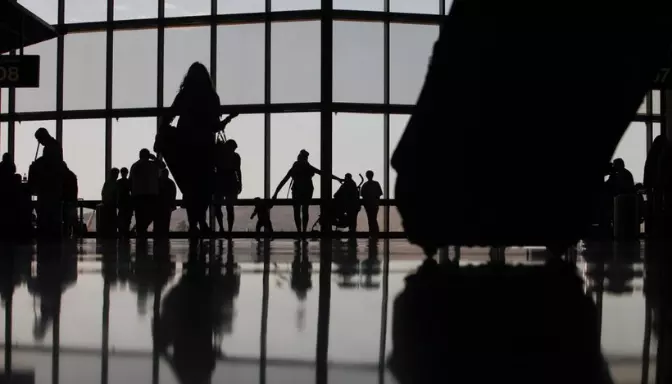Diksia.com - Traveling is one of the best ways to broaden your horizons, learn new things, and have fun. But traveling can also be stressful, expensive, and time-consuming. How do you make the most of your trips, whether for work or pleasure?
One way to find out is to learn from the experts: the journalists who travel the world for a living. The Wall Street Journal is one of the most respected and influential newspapers in the world, covering business, politics, culture, and more. Its reporters and editors have to travel frequently, often on short notice, to cover breaking news and stories from different regions and perspectives.
So how do they do it? How do they find the best deals, avoid the crowds, discover the hidden gems, and stay safe and healthy on the road? Here are some tips and tricks from the Wall Street Journal travel team, based on their own experiences and insights.
Tip #1: Plan ahead, but be flexible
The first step to a successful trip is to plan ahead. Research your destination, book your flights and hotels, pack your essentials, and get your documents and vaccinations in order. Planning ahead can save you money, time, and hassle, and help you avoid unpleasant surprises.
But planning ahead doesn’t mean sticking to a rigid itinerary. Sometimes, the best travel experiences are the ones that are unplanned, spontaneous, and serendipitous. Be open to changing your plans, exploring new places, meeting new people, and trying new things. You never know what you might find or learn along the way.
For example, WSJ travel columnist Dawn Gilbertson1 advises travelers to be flexible about their dates and destinations, especially during peak seasons. She says that by using tools like Google Flights and Skyscanner, you can find cheaper and less crowded alternatives to popular places and times. She also suggests checking out the WSJ’s Travel section, which features news, articles, and reviews on various destinations, from Sydney to Montreal, and from [Hollywood] to [Florida].
Tip #2: Travel light, but smart
The second step to a successful trip is to travel light, but smart. Traveling light means packing only what you need, and leaving behind what you don’t. Traveling smart means packing what you need in a way that is convenient, organized, and secure.
Traveling light and smart can make your trip easier, faster, and more enjoyable. You can avoid baggage fees, save space, move around more freely, and reduce the risk of losing or damaging your belongings.
For example, WSJ travel reporter Allison Pohle recommends using packing cubes, compression bags, and ziplock bags to organize and compress your clothes and accessories. She also suggests rolling your clothes instead of folding them, and packing them in layers, from heaviest to lightest. She also advises travelers to pack versatile items that can be mixed and matched, and to wear their bulkiest items on the plane.
Tip #3: Be curious, but respectful
The third step to a successful trip is to be curious, but respectful. Traveling is a great opportunity to learn about different cultures, histories, and perspectives. But traveling also comes with a responsibility to respect the people, places, and customs that you encounter.
Being curious and respectful means asking questions, listening, observing, and participating, but also being mindful, polite, and considerate. Being curious and respectful can enrich your trip, deepen your understanding, and foster positive relationships.
For example, WSJ travel writer Colette Coleman recommends trying a homestay, where travelers stay with local families, as a way to immerse yourself in a culture and connect with the people. She says that homestays can offer authentic, meaningful, and memorable experiences, but they also require flexibility, communication, and gratitude. She also advises travelers to research the local etiquette, dress code, and language before arriving, and to follow the host’s rules and routines.
Tip #4: Have fun, but be safe
The fourth step to a successful trip is to have fun, but be safe. Traveling is a chance to have fun, relax, and enjoy yourself. But traveling also involves some risks, such as accidents, illnesses, crimes, and natural disasters. How do you balance having fun and being safe?
Having fun and being safe means being aware, prepared, and cautious, but also being adventurous, optimistic, and confident. Having fun and being safe can make your trip more satisfying, comfortable, and rewarding.
For example, WSJ travel reporter Jacob Passy warns travelers about the dangers of bringing or consuming drugs on cruise ships, even if they are legal in some states or countries. He says that cruise lines have strict policies and penalties for drug possession and use, and that travelers can face drug-sniffing dogs, searches, confiscation, fines, arrests, and lifetime bans. He also advises travelers to check the local laws and regulations before traveling, and to avoid buying or accepting drugs from strangers.
Tip #5: Share your stories, but keep some secrets
The fifth and final step to a successful trip is to share your stories, but keep some secrets. Traveling is a wonderful way to create stories, memories, and connections. But traveling also involves some privacy, mystery, and intimacy. How do you share your stories and keep some secrets?
Sharing your stories and keeping some secrets means being expressive, generous, and social, but also being discreet, selective, and personal. Sharing your stories and keeping some secrets can make your trip more meaningful, inspiring, and special.
For example, WSJ travel editor Tony Perrottet suggests finding and visiting the places where the old Hollywood stars lived, worked, and played, such as the [hot dog stand] where Marilyn Monroe met Joe DiMaggio, or the [theater] where Charlie Chaplin premiered his films. He says that these places can offer a glimpse into the glamorous and fascinating lives of the celebrities, but they also have a sense of mystery and nostalgia that can’t be captured by photos or words.
So there you have it: five tips on how to travel like a Wall Street Journalist. Whether you are traveling for business or pleasure, for a week or a month, for a city or a country, these tips can help you make the most of your trips. Happy travels!






